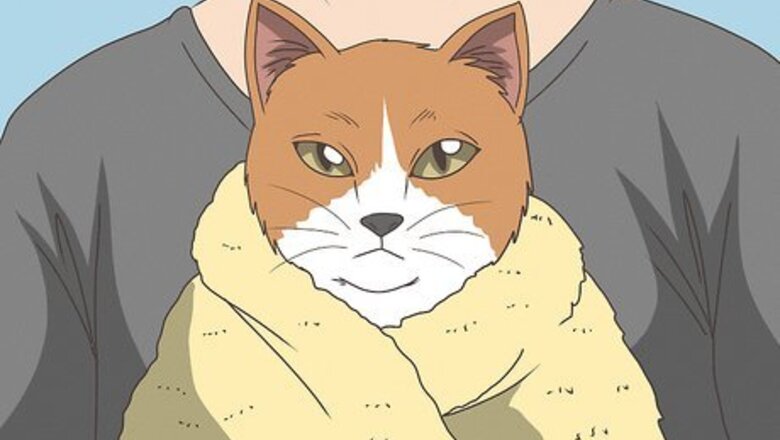
views
X
Research source
The cat also may limp, cry out in pain, or keep licking its paw. The first thing you'll want to do is stop the bleeding. Then, you'll want to take a good look at the claw and consult a vet for advice.
Stopping the Flow of Blood
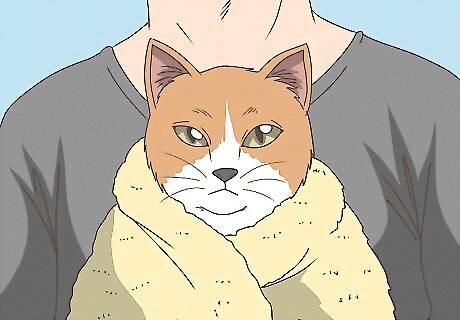
Wrap the cat up in a towel. You're going to need to examine the cat's paw a bit, so you'll need to make sure it can't bite or scratch you. The best way is to have someone help you. Contain the cat by wrapping it securely in a towel or blanket. Hug it so it has trouble moving, and then examine the paw. Leave its head out so it has space to breathe. You may think your cat would never bite you, but animals who wouldn't normally bite may lash out when in pain.

Hold a paper towel on the nail. If the nail is bleeding, you need to stop the bleeding. You can simply hold a clean cloth on the nail for about 5 minutes until the bleeding stops.
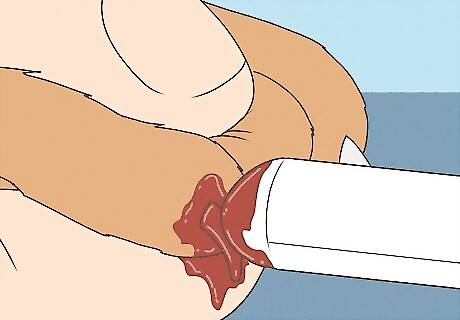
Try a styptic pencil. If the cut won't stop bleeding, you can use a styptic pencil instead. Rub it across the cut to help stop the bleeding. You can also use styptic powder or cauterizing powder. If you can't don't have those options available to you, try using cornstarch or flour pressed gently into the end of the nail. You can also try running a bar of soap across the nail a few times to pack the wound.
Working on the Claw at Home
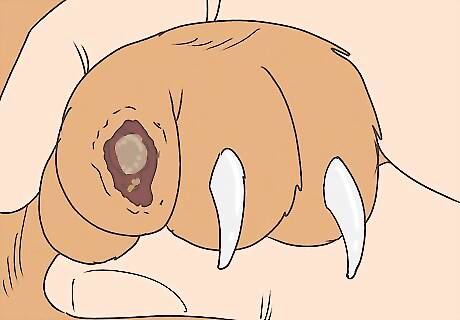
Look for signs of infection. The claw may be doing more than bleeding. It may also have discharge, such as pus. If it does, it most likely has an infection, and it will definitely need to be treated by a vet. Also check for limping, heat, swelling, or redness, which indicate infection as well. If you suspect an infection at all, take the cat to the vet. The claw is connected to the bone, and infection in the claw could spread to the bone.
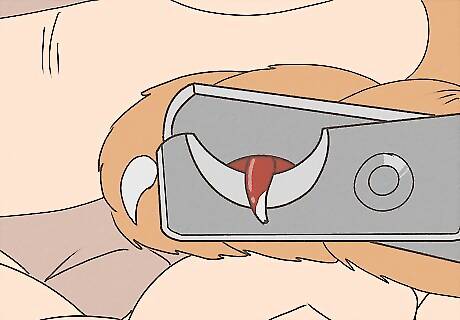
Cut the nail if possible. If the claw isn't infected, you may be able to trim it at home. If you examine the claw, you may notice part of it that you can trim away easily. You can try to treat it, but you may still need to take the cat to the vet.
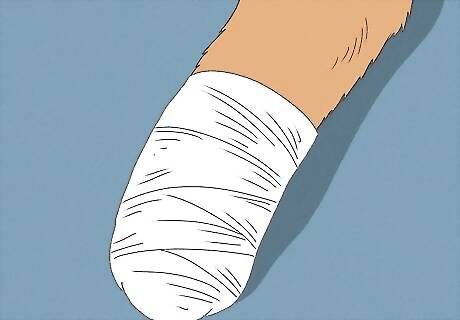
Place a bandage on it. Once the claw stops bleeding, you may need to apply a bandage. The best way to bandage it is to apply a sterile gauze pad to the claw. You can wrap a layer of cotton gauze around next for padding. For the final layer, use a layer of elastic bandages that stick to themselves. Wrap it around the paw so that it is snug, but not tight. A bandage that is too tight can cut off circulation to the paw and cause permanent damage.
Getting Help from the Veterinarian
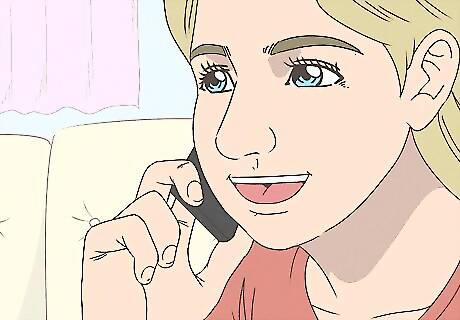
Call your vet. A broken claw may not need treatment by a vet, particularly if it stops bleeding. However, sometimes this condition continues to be painful or develops an infection, and you'll need to see the vet. Make a call first to see what the vet recommends.
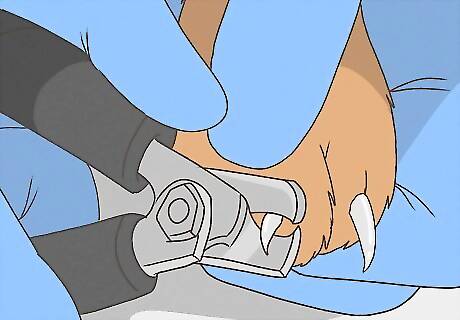
Expect sedation and trimming. While your cat won't need to be knocked out completely, the vet may use light sedation to make it easier to work on the cat. Then, the vet will trim the nail with a professional trimmer. The vet may also need to drain pus if the infection is bad.
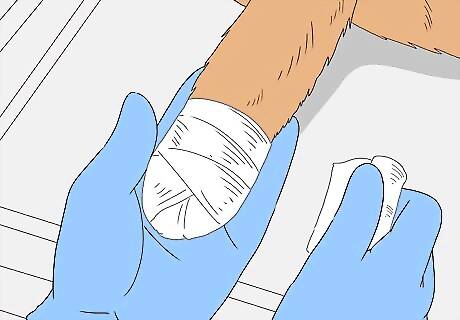
Watch the vet bandage the nail. When the vet is done trimming back the nail, they'll apply a bandage. Pay attention to how the vet bandages the nail, so you can apply it properly at home. The vet will likely use an antibiotic ointment on the nail to help prevent infection.
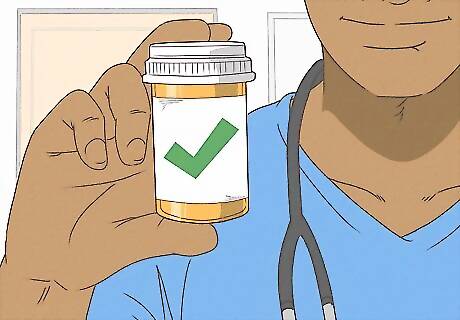
Give antibiotics and pain medications. Your vet will likely prescribe an antibiotic for prevention or treatment of infection. If the cat is in pain, the vet will also prescribe a pain medication.
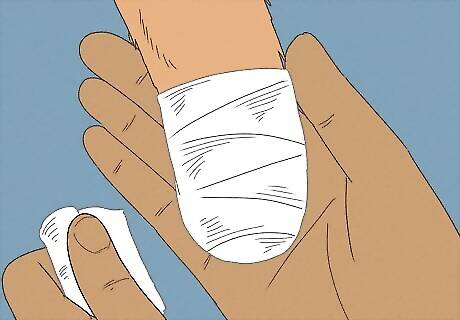
Change the bandages. You'll need to change the bandages for several days to help keep it clean. The vet should show you how to do it. You should also look to make sure an infection isn't developing.
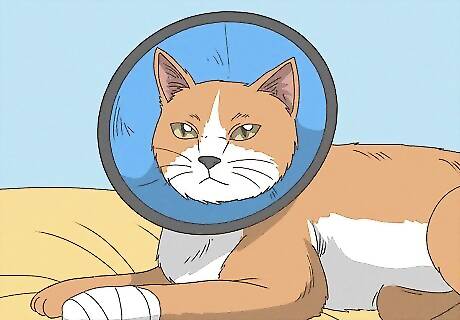
Protect the area from your cat. Many cats are bothered by the feeling of bandages on their feet and will work hard to remove them. Even worse, pain and discomfort caused by the broken nail will cause your cat to lick the area, leading to infection. If your cat will not leave the area with the bandage alone, you will have to purchase an e-collar (commonly called the "cone of shame") to prevent them from bothering the area. It is very important that your cat wear this collar at all times when you are not actively watching them.
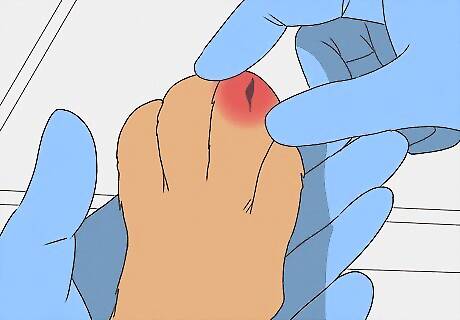
Visit the vet again. Because of the possibility of infection, you may need to visit the vet again. You certainly should if you notice infection, but the vet will likely want you to come back in a couple of days anyway, just in case.



















Comments
0 comment